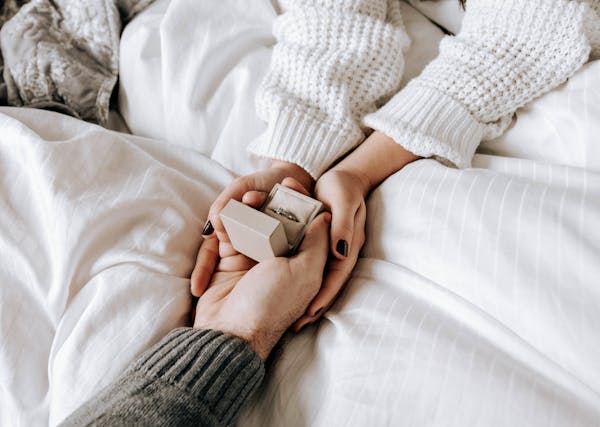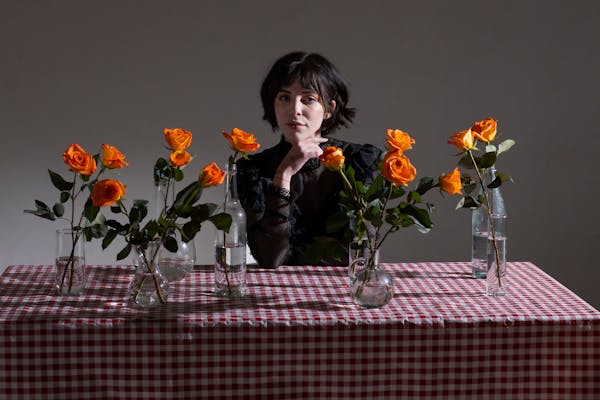New York bill would give fashion models more labor protections
New York’s fashion models and influencers would get greater protection from exploitation by management companies and agencies under a proposed state bill that aims to shake up an industry that employs 230,000 workers.
Expected to be introduced by State Sen. Brad Hoylman on Friday, the Fashion Workers Act would for the first time require management companies or modeling agencies, which typically serve as intermediaries between clients and models, to register with the state and disclose their ownership. Unregistered agencies would no longer be able to operate in New York. It would also codify basic protections for workers, such as good-faith representation and more reliable payment schedules.
Proponents of the bill say a loophole in current state law classifies most bookings as incidental, resulting in a lack of transparency on contracts and fees; garnished wages for housing, photography, and other expenses; and payments that can take months and even years to materialize.
“We want to make certain that New York continues to be the heartbeat of fashion for the American apparel industry, but that it does so in a way that protects its employees,” said Hoylman, who represents a slice of Manhattan that includes the Garment District.
The proposal comes at a time when other industries are being pressured by labor advocates to recognize workers as employees entitled to protections and benefits. A California judge last August struck down the industry-backed Proposition 22, which would have formally classified Uber and Lyft drivers as independent contractors, and the Biden administration in February indicated it would take a sharper look at employment misclassifications in the warehouse industry. The president of the Teamsters union, James Hoffa, has said he expects the administration to examine worker misclassification at U.S. ports.
The fashion industry is a $2.5 trillion global juggernaut, according to a 2018 estimate by the consultant group McKinsey & Co. Yet for all of the glamour associated with the field, few models will see even a fraction of that money in their lifetimes. The median annual pay for a model in the U.S. was just under $32,000 in 2020, according to the Bureau of Labor Statistics. That’s less than the cost of some lighting racks at a single New York Fashion Week show. Some models are lucky if they see their money in a timely fashion, or at all.
Sara Ziff, founder of the model-advocacy group Model Alliance, said some of the most common complaints called into the group’s helpline center are late or nonpayment of money earned, and unexplained deductions taken from models’ paychecks.
“Agencies insist that we’re independent contractors despite the high level of control that they exert over our working lives,” she said, adding that it’s not uncommon for models to be sent to jobs without prior knowledge of their rate. “If we’re independent contractors, then allow us to see our contracts with the clients.”
The Fashion Workers Act would mandate that agencies pay models within 45 days of a job’s completion, which Ziff says allows time for a client to pay the agency. A 2019 Women’s Wear Daily Report cited client payment schedules ranging from 30 to 90 days, though some models said they had waited months or even years for payments to trickle down to them.
“I started to really realize without protections, how tough it is,” said Alex Shanklin, a former model and the lead plaintiff in a class-action lawsuit against the agency Wilhelmina Models Inc. Those working conditions, he said, “made it hard for me, and I believe it makes it almost hard for anybody unless you are a supermodel or celebrity.”
Equally pervasive, models say, is a culture of racism and discrimination by agencies, particularly against Black models. The bill would specifically bar agencies from discriminating against models on the basis of race, ethnicity, sexuality, and other identities protected by the Civil Rights Act of 1964, and from retaliating against models who file complaints against them.
Shanklin said it wasn’t uncommon to feel like agencies were trying to limit the number of Black models they represented. “At times in my career, there would be two Black male models on a whole board of 300 or 400 guys, so you almost had to scan and see, ‘OK, do they have my look?'” he said. “I do feel something needs to be in place that we don’t go back.”
A February report by the website the Fashion Spot found that the February NYFW shows debuting designers’ Fall/Winter 2022 collections were the third-most racially diverse since the site began tracking the Spring/ Summer 2015 season. However, overall diversity fell slightly compared with the previous season, when 57.1% of the models who walked NYFW shows were models of color. Metrics for gender-, size-, and age-inclusive casting also slipped from previous highs. New York City’s biannual Fashion Week events are estimated to generate $887 million in annual revenue, more than the similar events in London, Milan, and Paris combined.
“Modeling and the creative industries in fashion are viewed as privileges and highly sought-after positions, but that doesn’t mean that we shouldn’t protect those individuals from rampant exploitation and ensuring that the workplace is safe and fair for them,” said Hoylman.






